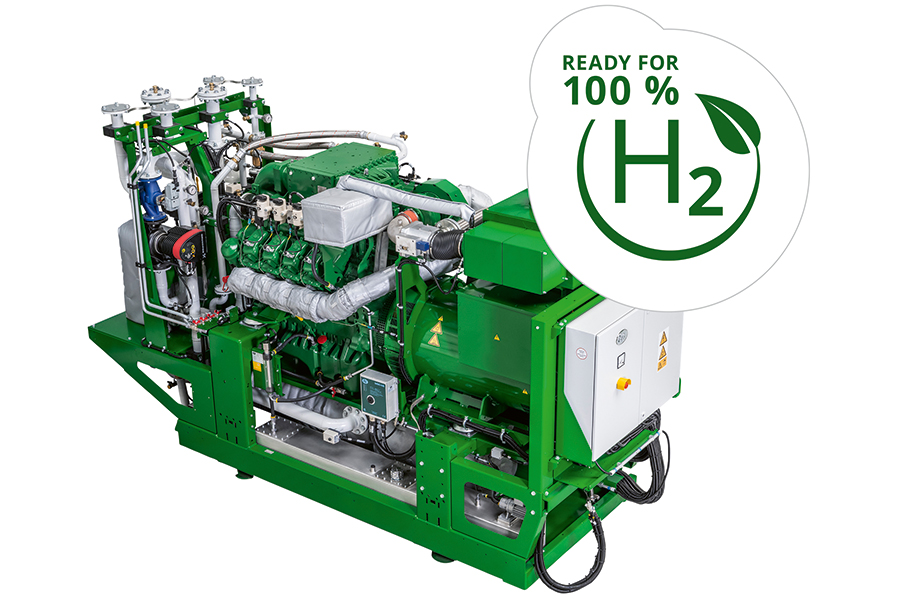- English

Looking at the continually increasing share of wind and solar energy, one thing is clear: In future, the lion’s share of the energy mix will originate from these two sources. But there’s a catch: we need a regenerative energy storage system which can bridge the temporal gap between energy production and energy use. Hydrogen will play a critical role in this project. Using an electrolytic process, the energy produced by wind and sun is transformed into hydrogen. At many locations across Europe, hydrogen is mixed into the natural gas grid and component manufacturers consider the changing mixing ratio in the development of new products. Thus, decentral CHP systems happen to be the missing piece of the energy transition puzzle as they reconcile the requirements of climate neutrality and supply security.
Engineering is not a limiting factor
2G from Germany, have already adapted their products to operate completely on hydrogen. Frank Grewe, 2G‘s CTO, points to the company’s decade-long history of H2 development and clarifies: “The technical implementation of hydrogen use in CHP systems is not a limiting factor at all. All main components, are nearly identical and even the engine itself is based on existing natural gas versions. Solely the carburetion before combustion necessitates some adjustments due to the different physical attributes of hydrogen.” Besides accounting for the increasing proportion of hydrogen in natural gas networks, CHP concentrates on the possible adaptation of existing natural gas systems to operate on hydrogen exclusively. “Nearly all of the currently active CHP systems can be retrofitted to operate on hydrogen during the course of a regular service activity. We account for this with about 15% of the initial investment allowing us to flexibly and efficiently react to the development of the hydrogen infrastructure”, explains Grewe. Consequently, the CHP technology is supposed to be an effective solution for a decentralized and climate-neutral energy supply, even in the long term.